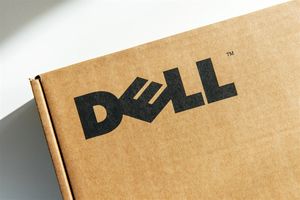
The insatiable demand fueled by the artificial intelligence (AI) revolution has sent shockwaves through the global semiconductor industry, creating an unprecedented supply squeeze in the commodity chip market. This intense pressure on supply, coupled with skyrocketing prices, has become a significant boon for leading memory manufacturers, most notably Samsung Electronics (KRX: 005930), which is now poised to report its best quarterly operating profit in over three years. As of October 2025, the market is grappling with robust demand, constrained supply, and rapidly escalating prices for essential memory components, all driven by the escalating infrastructure requirements of AI.
The current market dynamic underscores a pivotal shift in the tech landscape, where the foundational components of AI—high-bandwidth memory (HBM) and conventional DRAM and NAND flash—are experiencing demand far outstripping supply. This phenomenon is not merely a transient spike but reflects a structural change, with AI firms and cloud service providers aggressively securing chip supplies for years to come. Samsung's estimated operating profit of 12.1 trillion won ($8.5 billion) for Q3 2025—a 32% increase year-over-year and a staggering 158% surge from the previous quarter—serves as a clear indicator of how profoundly the AI boom is reshaping financial fortunes within the semiconductor sector.
The Epicenter of the Squeeze: Production Shifts and Unprecedented Demand
The commodity chip market finds itself in an extraordinary squeeze, a direct consequence of the AI boom's voracious appetite for processing power and data storage. At the heart of this crunch is a strategic reallocation of manufacturing resources by memory giants like Samsung and SK Hynix (KRX: 000660). These companies have shifted existing DRAM production lines to prioritize the more complex and highly profitable HBM chips, which are critical for advanced AI accelerators. While lucrative, this necessary pivot has inherently reduced the overall capacity available for conventional DRAM, exacerbating supply constraints for a component essential to virtually all computing infrastructure.
Compounding this, the computational demands of AI necessitate a massive, ongoing expansion of data centers worldwide. These facilities are the backbone of AI operations and rely heavily on conventional DRAM and NAND products. Adding to the pressure, AI firms and hyperscale cloud providers are engaging in aggressive, long-term procurement strategies. For instance, reports indicate that OpenAI's ambitious "Stargate" project has entered into agreements with major memory manufacturers to secure up to 900,000 wafers of DRAM per month, a volume that alone represents nearly 40% of global DRAM output. This forward-booking behavior is effectively selling out high-density NAND products months in advance, with Samsung's next-generation V9 NAND reportedly almost fully booked even before its official launch.
As of October 2025, upstream memory foundries are operating with critically low inventories, some holding only two to three weeks' worth of stock. Despite efforts by manufacturers to increase DRAM and NAND output by 15-30%, the lead time for new fabrication capacity—at least two and a half years from construction to production—ensures that short-term supply tightness will persist. In this constrained environment, AI servers receive top priority in foundry supply, followed by general-purpose servers, PCs, and then smartphone OEMs, leaving other markets to vie for residual supply. This convergence of reduced conventional chip capacity and robust, long-term AI-driven demand has led to significant price hikes, with average DRAM prices reportedly jumping approximately 172% year-over-year in Q3 2025 and NAND flash prices surging an anticipated 5-10% in Q4 2025. Some industry analysts are even warning that this memory shortage could potentially last for a decade.
Navigating the AI Wave: Winners, Losers, and Strategic Shifts
The AI-driven commodity chip squeeze has created a clear delineation of winners and those facing significant challenges within the semiconductor ecosystem. Unsurprisingly, the primary beneficiaries are the major memory chip manufacturers. Samsung Electronics (KRX: 005930), as the world's largest memory chipmaker, is at the forefront, directly capitalizing on the tight supply and soaring prices of commodity memory. The company's impressive profit rebound for Q3 2025 is largely attributed to this booming demand for conventional DRAM and NAND chips, which has successfully offset slower-than-expected sales of its advanced HBM chips where competition is fierce. Similarly, SK Hynix (KRX: 000660), another dominant player in the memory market and a key HBM supplier, is also well-positioned to reap substantial rewards from the current market conditions. These companies are benefiting from improved inventory management, which has given them increased bargaining power in pricing.
On the other side of the equation, companies heavily reliant on commodity chips for their products are facing significant headwinds. PC and smartphone original equipment manufacturers (OEMs) are likely to experience higher component costs and potential supply chain disruptions as they are deprioritized in the allocation of memory chips compared to AI servers. This could translate into higher manufacturing costs, potentially impacting their profit margins or leading to increased end-product prices for consumers. Smaller technology companies and those in industries with less strategic importance to the AI infrastructure might struggle to secure necessary chip volumes, potentially delaying product development or market entry. While the AI boom presents immense opportunities, it also creates an uneven playing field, where access to fundamental hardware dictates competitive advantage and operational viability. The long-term implications for these companies will depend on their ability to adapt supply chain strategies, absorb higher costs, or innovate to reduce their reliance on the most constrained components.
Wider Implications: A Shifting Industry Paradigm
The current commodity chip squeeze, driven by the AI boom, is more than just a temporary market fluctuation; it signifies a profound paradigm shift within the global technology industry. This event underscores the increasing strategic importance of memory chips, which are no longer mere components but critical enablers of the AI-driven economy. The aggressive procurement tactics by AI firms and cloud service providers highlight a broader trend towards vertical integration and long-term supply agreements, as companies seek to secure their foundational hardware needs in an increasingly competitive landscape. This fits into the broader industry trend of an AI arms race, where access to cutting-edge silicon is a key determinant of success.
The ripple effects extend across the entire technology ecosystem. Competitors in the AI hardware space, such as NVIDIA (NASDAQ: NVDA) and AMD (NASDAQ: AMD), while primarily focused on GPUs, are also indirectly impacted by the memory market dynamics, as HBM and conventional memory are crucial for their accelerator performance and the broader server infrastructure. The squeeze could accelerate collaborations between chip designers and memory manufacturers to optimize performance and supply. Furthermore, the persistent nature of this shortage raises potential regulatory and policy implications. Governments worldwide, already sensitive to semiconductor supply chain vulnerabilities exposed during the pandemic, may consider interventions to secure domestic chip production or diversify global supply sources. Geopolitical factors, such as China's recent rare earth export curbs, also loom large, posing further risks to the global semiconductor supply chain and potentially exacerbating price volatility and lead times. Historically, similar periods of intense demand, like the dot-com bubble or the early smartphone era, have led to significant investments and subsequent oversupply, but the current AI demand appears to be structurally different, driven by fundamental computational needs rather than speculative growth.
The Road Ahead: Navigating a Decade of Demand?
Looking ahead, the short-term outlook for the commodity chip market suggests a continuation of tight supply and elevated prices. With new fabrication capacity taking at least two and a half years to come online, the current supply tightness for both DRAM and NAND is expected to persist well into 2026. This prolonged period of demand outstripping supply will likely continue to benefit memory manufacturers like Samsung (KRX: 005930) and SK Hynix (KRX: 000660), allowing them to maintain strong pricing power and profitability. For companies on the demand side, strategic pivots will be essential, including increased investment in long-term supply contracts, diversification of component sourcing, and potentially even exploring in-house chip design for specialized applications to mitigate reliance on external markets.
In the long term, the industry faces several potential scenarios. One possibility is a sustained period of high demand, with some analysts even warning of a memory shortage that could last a decade, driven by the continuous evolution and deployment of AI across various sectors. This scenario would necessitate massive capital expenditure from chipmakers to expand capacity, alongside ongoing innovation in memory technologies. Alternatively, a deceleration in the pace of AI spending growth, while not currently anticipated to be a fade in overall demand, could eventually lead to a more balanced market or even an oversupply if current expansion plans are aggressive. Market opportunities will emerge for companies that can innovate in chip efficiency, develop new memory architectures, or provide solutions that optimize chip utilization. Challenges will include managing the escalating costs of components, securing talent for advanced manufacturing, and navigating an increasingly complex geopolitical landscape that impacts global supply chains.
Wrap-Up: A New Era for Semiconductors
The AI boom has unequivocally ushered in a new era for the semiconductor industry, fundamentally reshaping the dynamics of the commodity chip market. The severe supply squeeze, marked by strategic production shifts, aggressive procurement, and critically low inventories, has driven up chip prices to unprecedented levels. Samsung Electronics (KRX: 005930) stands as a prime example of a company effectively capitalizing on these market conditions, achieving its strongest quarterly profits in years due to robust demand and elevated pricing for memory chips. This event underscores the foundational role of memory in the AI revolution and the resulting strategic importance it now commands.
Moving forward, the market will likely remain a seller's market for memory components through 2026 and potentially beyond, driven by persistent AI-related demand. Investors should closely watch the capital expenditure plans of major memory manufacturers, the pace of data center expansion by hyperscalers, and any significant shifts in AI development trends. The long-term impact of this squeeze is likely to be a more resilient, but also more strategically complex, semiconductor supply chain, with greater emphasis on securing critical components. This period will demand agility and foresight from all players, as the industry adapts to the sustained, transformative power of artificial intelligence.
This content is intended for informational purposes only and is not financial advice


















